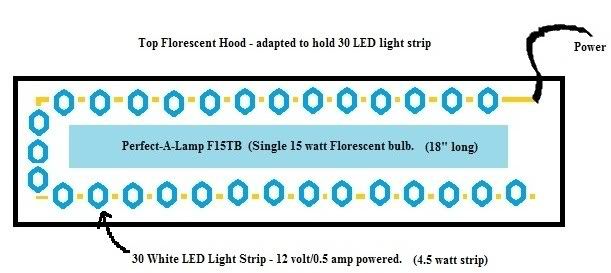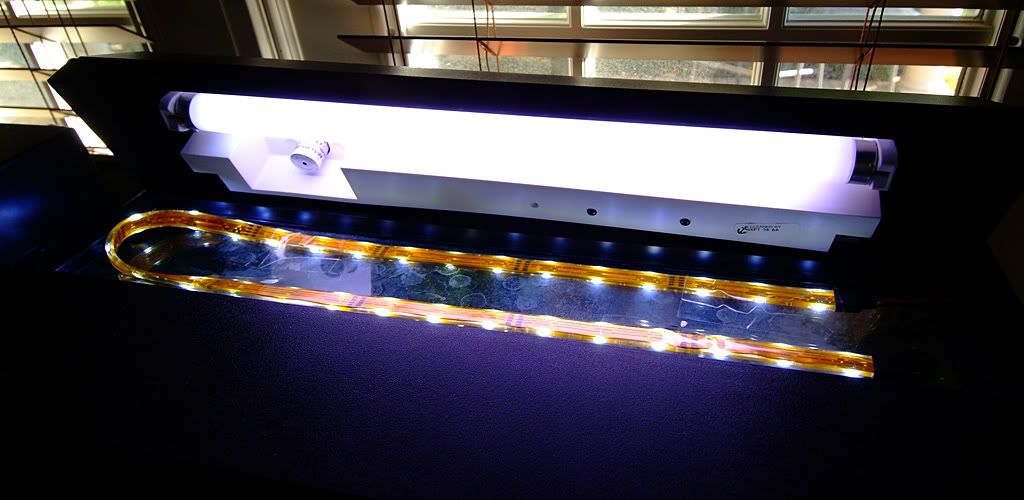Well, it is dark so I thought I would do a quick look at the spectra of the lights used in my aquarium. As noted before my aquarium originally came with two florescent bulbs marked Perfect-A-Lamp F15T8 (18 inches long and 110 volts/15 watts each) rated at 700 lumen by the manufacturer. I tested this bulb (in air) in a previous post and measured and calculated a lumen value of 672.6. As the bulb is not new this is not an unreasonable value to obtain. It is supposed to be similar to a Gro-lux bulb providing critical action spectra for growing plants.
I have added to that on one side a strip light of 30 white LEDs rated at 12 volts/4.5 watts. I tested and calculated the lumen value (in air) for the LED light at 951.3 lumen.
Also previously noted, the LED has an inherent benefit of intensity as they are designed to have nearly 100% of it's light focused downward which is advantageous in an aquarium where you want as much of the light as possible directed downward into the water. This is not the case for any florescent lights as they direct their light in a 360 degree angle and only have about 30% of it's light pointed downward. So, right off the bat, they have a design issue. Even with better reflectors above florescent lights, users report that only minimally they get slightly better results.
A direct benefit of the LED design is that they are able to measurable penetrate the water inside the aquarium with much more efficiency. My data table, previously posted shows that in my experimental case, the amount of light reaching the bottom for the LED light (18 inches to the top of the gravel) was 44% of the total output in air. The florescent light had only 29% of it's light reaching the bottom. A value of 300 lumen (minimally) is reported needed for plants at the bottom of a freshwater aquarium. The florescent light alone provides only 196.9 lumen while the LED alone provides for 422.2 lumen. If the reference is acurate it looks like these low power LED's do provide sufficient light for bottom plants. (Note - we are only talking about fresh water aquariums here. Salt water aquarium have different needs and standards).
The action spectra needed by plants is summed up in the next two images.
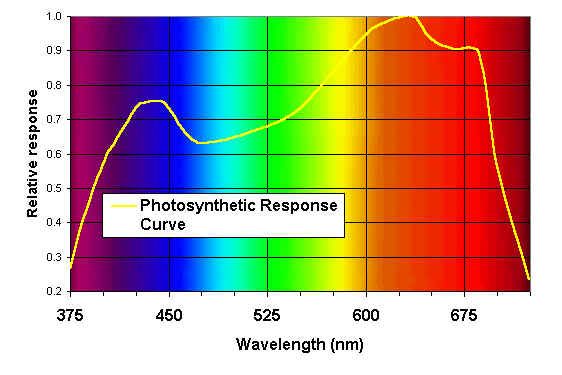
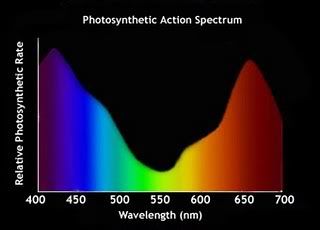
The spectra utilized by the plants incorporate regions of the blue and red spectra. Plants are green because they reflect green light.

Utilizing a holographic diffraction grating I just bought and a camera I took pictures of the spectral output of the florescent and LED bulbs I am using. The first one is the florescent bulb.

You will note that there are indeed spectral lines in the red and blue zones and this is supposedly by design by the manufacturer who makes claims that their bulbs support plant growth. The intensity is not very bright and the red and blue regions are not very wide but they do exist. The next image is for my LED light setup.

You can see right away that these white LED lights are a full spectrum bulb that incorporate much of the blue and red zones. As long as these red and blue zones are supplied they will provide for the needs of plant growth. The benefit of being a full spectrum bulb is that you get a normal appearance when viewing your tank. If the bulbs were specifically designed to only provide for plant growth they would look like this.
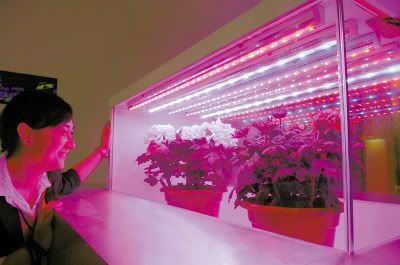
Your plants would grow well but I am not sure I would want to look at the aquarium in this kind of light. The plants need the red and blue spectra but for us humans we prefer to see light as it comes from the sun in a full spectra.
I have a LED flashlight that uses a CREE high power module in it. These high power LED CREE modules are used in the expensive commercial LED light systems now proliferating in the market. I did a spectral image for it as well.

Note that it is very bright compared to the low powered LED unit but it too has a full spectrum supporting the red and blue regions very well.
I think that this part of the experiment is coming to a conclusion. The low powered LED lighting unit I have added to my aquarium does indeed support the active red and blue zones and it does it in a far more efficient way than the florescent bulbs, in terms of cost effectiveness, power requirements, output of light in the active zone regions, light penetration to the bottom of the aquarium and longevity of the bulbs in use. To me, it is not even a close call. In fact, the florescent bulbs have a puny output compared to the LED set-up. So much so, that I am going to remove entirely the florescent fixtures in their housings and totally replace them with an LED light system. I will duplicate the system for each light housing.
I hope that this provides useful information for others with a little DIY experience and the desire to make significant improvement in growing plants in their aquaria. I may be able to add a bit of extra information to this when I get a spectrophotometer I ordered from Edmond Scientific. It may be able to directly tell me the exact spectral frequencies supplied by these lights. As the spectrum appears to cover most of the red and blue regions I think that we will see that the action spectra are well represented. I will post the data when I make the final tests.
If you have a camera light meter capable of providing EV readings or you purchase a low cost Lux meter like this one:
http://www.amazon.co...17436719&sr=8-1 plus the low cost holographic diffraction grating I used, you should be able to duplicate this experiment and provide for your own measurements as you design or adapt a LED lighting system for you tanks.
Usil
Edited by Usil, 30 September 2011 - 09:59 PM.



